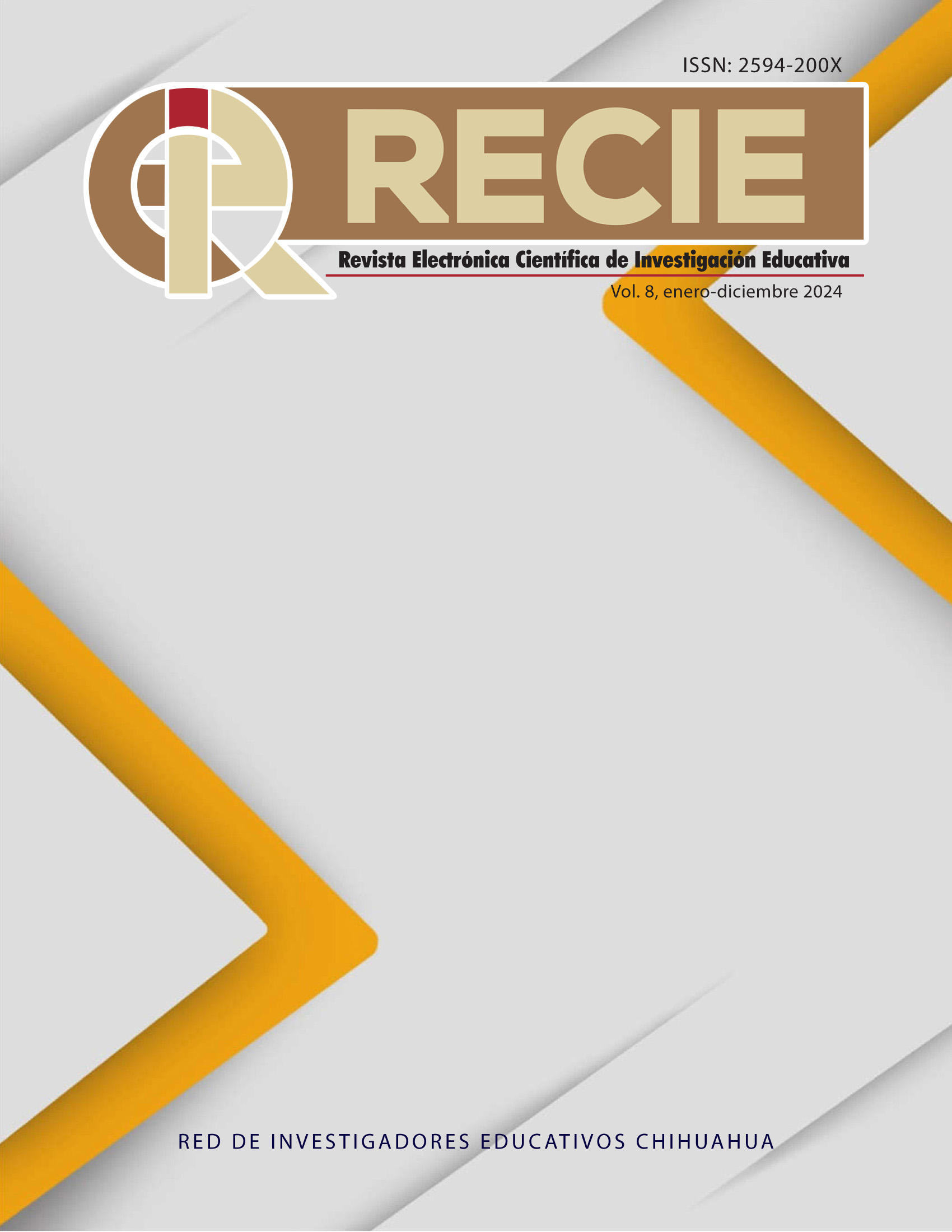Published 2024-12-31
Keywords
- Education and technology,
- writing,
- summaries,
- second language
- Educación y tecnología,
- escritura,
- resúmenes,
- segunda lengua}
How to Cite
Copyright (c) 2024

This work is licensed under a Creative Commons Attribution-NonCommercial 4.0 International License.
Abstract
Writing a summary in English is a major challenge for students, especially at the high school level, since they can demonstrate their understanding of a text with it or use it as a basis for producing another type of discursive genre. However, the existing literature reveals that there are not many didactic proposals in this regard, so the present work aimed to evaluate a teaching strategy for writing a summary in English to high school students at an institution located in Central Mexico. This research was guided by the Design-Based Research methodology, and it incorporated a periodic design evaluation and redesign process, using the guidelines established by the Reciprocal Teaching Method and the use of digital resources. The results showed that the use of information and communication technologies and the implementation of writing workshops allowed students to learn to produce a summary in English clearly and concisely, which was evaluated through pre- and post-intervention tests that showed improvement mainly in two areas: communicative purpose and textual macrostructure. It is concluded that, to write a summary, it is necessary to understand the text to be summarized, so this linguistic skill should not be considered an isolated activity, but rather complemented with actions that promote its development.
References
- Cassany, D. (2005). Describir el escribir. Cómo se aprende a escribir. Paidós.
- Cassany, D. (2007). Afilar el lapicero. Anagrama.
- Chaparro-Aranguren, R. L., y Narváez-Hernández, A. L. (2021). Diseño de un ambiente de aprendizaje para fortalecer la escritura del idioma inglés en secundaria. Revista Unimar, 39(2), 108-121. https://doi.org/10.31948/Rev.unimar/unimar39-2-art5
- Dolz, J., y Gagnon, R. (2010). El género textual, una herramienta didáctica para desarrollar el lenguaje oral y escrito. Lenguaje, 38(2), 497-527. https://archive-ouverte.unige.ch/unige:37208
- EF English Proficiency Index (2024). El ranking mundial más grande según su dominio del inglés. https://www.ef.com.mx/epi/
- Ferreiro, E. (2006). La escritura antes de la letra. CPU-e, Revista de Investigación Educativa, (3), 1-52. https://www.redalyc.org/articulo.oa?id=283121724001
- Flower, L., y Hayes, J. (1981). A cognitive process theory of writing. College Composition and Communication, 32(4), 365-387. https://doi.org/10.2307/356600
- OMS [Organización Mundial de la Salud] (2021, oct. 19). Adolescent health and development. https://www.who.int/news-room/questions-and-answers/item/adolescent-health-and-development
- Ortiz, M., y Parra, A. (2006). La enseñanza y el aprendizaje de la escritura durante la alfabetización inicial. Revista de Artes y Humanidades UNICA, 7(17), 39-64. https://www.redalyc.org/articulo.oa?id=170118739003
- Palinscar, A. S., y Brown, A. L. (1984). Reciprocal teaching of comprehension-fostering and comprehension-monitoring activities. Cognition and Instruction, 1(2), 117-175. https://doi.org/10.1207/s1532690xci0102_1
- Riestra, D., Goicoechea, M. V., y Tapia, S. M. (2014). Los géneros textuales en secuencias didácticas de lengua y literatura. Noveduc.
- Rivera Morelos, D. I., Velásquez Upegui, E. P., Escobar Arboleda, Y. A., Tovar González, J., y Esquivel Moreno, L. I. (2020). Desarrollo de habilidades para la lectura y la escritura de la universidad. Eólica.
- Rosario-Grullón, Y., Viñas-Marte, R., y Calderón, L. (2024). Diseño y validación de una rúbrica para elaborar consignas de escritura. Enunciación, 29(1). https://revistas.udistrital.edu.co/index.php/enunc/article/view/21729
- Ruiz, S., y Beke, R. (2012). La producción de resúmenes en Inglés como Lengua Extranjera (ILE). Núcleo, 24(29), 105-130. http://ve.scielo.org/scielo.php?script=sci_arttext&pid=S0798-97842012000100005
- Salvador Mata, F. (2003). La habilidad de expresarse por escrito: una perspectiva psicolingüística y cognitiva sobre la expresión escrita. En M. S. Ruiz Jiménez (dir.), Curso temático: acceso a la lecto-escritura (pp. 1-28). CPR-Mar Menor (CD). http://iestorre.sytes.net/mochila/sec/monograficos_sec/ccbb_ceppriego/lengua/aspgenerales/habilidad_escrito.pdf
- Szűcs, Á., y Kövér, Á. (2016). Reading skills involved in guided summary writing: a case study. Working Papers in Language Pedagogy, 10(1), 56-72. https://langped-old.elte.hu/WoPaLParticles/W10SzucsKover.pdf
- Triana Rodríguez, A. (2022). El fortalecimiento del proceso de escritura en inglés mediante la utilización del diario en Google Docs. En E. Rodríguez Pérez (comp.), Lecturas en aula: enlaces, tejidos y tramas (pp. 139-202). Universidad Nacional de Colombia.
- Van Dijk, T. (1978). La ciencia del texto. Un enfoque interdisciplinario. Paidós.


